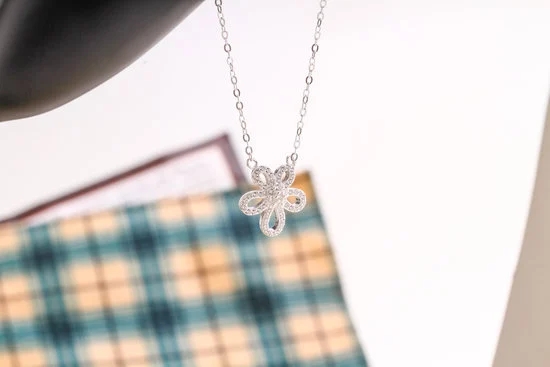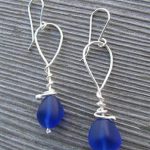The history of lucite jewelry dates back to the mid-20th century, where it quickly gained popularity for its unique, colorful and lightweight properties. This article will explore the origins and development of lucite as a material for jewelry, the pioneers in lucite jewelry design, its impact on popular culture and fashion, as well as its resurgence in modern times.
Lucite jewelry has a rich history that has shaped the fashion industry and continues to capture the attention of collectors and enthusiasts. From its humble beginnings to its current status as a timeless and iconic accessory, understanding the evolution of lucite jewelry provides insight into its enduring appeal.
Throughout this article, we will delve into the artistry and craftsmanship behind lucite jewelry, provide tips for identifying and authenticating genuine pieces, offer guidance on care and maintenance, and speculate on the future of lucite jewelry in the fashion industry. Join us as we explore the fascinating world of lucite jewelry and uncover its enduring allure.
The Origins and Development of Lucite as a Material for Jewelry
The origins of Lucite as a material for jewelry can be traced back to the 1930s, when DuPont introduced this transparent thermoplastic resin to the market. Initially, Lucite was primarily used in industrial and military applications due to its durability and versatility. However, its unique properties soon caught the attention of jewelry designers who were looking for a lightweight and affordable alternative to traditional materials like metal and gemstones.
Development of Lucite in Jewelry Making
As the demand for costume jewelry increased during the mid-20th century, designers began experimenting with Lucite to create bold and colorful statement pieces. Its ability to be molded, carved, and dyed made it an ideal material for producing intricate designs with vibrant hues that were not possible with natural gemstones. The affordability of Lucite also allowed for mass production of trendy designs, making it accessible to a wider audience.
Popularity in Mid-Century Fashion
During the 1940s and 1950s, Lucite jewelry became synonymous with glamour and sophistication in popular culture. Hollywood stars and fashion icons were often seen wearing flamboyant Lucite accessories on screen and off, solidifying its place in the world of high fashion. Its lightweight nature made it comfortable to wear for long periods, while its durability ensured that these pieces could withstand frequent use without losing their luster.
The history of Lucite jewelry is a testament to its enduring appeal and creativity as a medium for self-expression through adornment. As we look back at its humble beginnings and evolution over the decades, we gain a deeper appreciation for the craftsmanship and innovation that have shaped this beloved form of accessory artistry.
Pioneers in Lucite Jewelry Design
Larry Vrba: A Master of Extravagance
One of the most influential figures in the history of lucite jewelry is Larry Vrba, known for his bold and extravagant designs. Vrba began his career at Miriam Haskell, where he honed his skills and eventually became the company’s head designer.
In the 1970s, he ventured into creating his own line of jewelry, incorporating lucite as a main material. His lucite jewelry pieces were renowned for their over-the-top and theatrical designs, making them highly sought after by fashion-forward individuals.
Patricia Von Musulin: Blending Art and Fashion
Another luminary in the world of lucite jewelry is Patricia von Musulin. With a background in sculpture and painting, Musulin brought a unique artistic perspective to her jewelry designs. Her use of lucite in combination with other materials such as silver and gold resulted in striking pieces that blurred the line between art and fashion. Musulin’s creations have been featured in prestigious museum exhibitions, cementing her status as an innovator in the field.
Rannie LeQuinty: Innovating With Color and Form
Rannie LeQuinty is renowned for her innovative approach to incorporating color and form into lucite jewelry. Through experimentation with different dyes and techniques, she was able to create vibrant and captivating pieces that pushed the boundaries of traditional jewelry design. LeQuinty’s work has earned her acclaim not only within the fashion industry but also among collectors and connoisseurs of art jewelry.
These pioneers in lucite jewelry design have left an indelible mark on the fashion world, with their groundbreaking creations continuing to inspire contemporary designers and collectors alike. Their visionary approach to using lucite as a material for jewelry has contributed to its enduring appeal throughout history.
Lucite Jewelry in Popular Culture and Fashion
The popularity of Lucite jewelry in popular culture and fashion cannot be understated. Since its introduction in the 1930s, Lucite jewelry has made its mark in the fashion world and has been favored by celebrities, fashion icons, and the general public. Its unique appearance and versatility have allowed it to become a staple in both high fashion and everyday wear.
In popular culture, Lucite jewelry has been featured in various films, television shows, and music videos. Iconic actresses such as Marilyn Monroe and Audrey Hepburn were often seen wearing statement Lucite jewelry pieces in their films, further solidifying its status as a symbol of style and sophistication. Additionally, musicians and pop stars have also embraced the trend, with performers like Madonna and Lady Gaga incorporating bold Lucite jewelry into their stage costumes.
In terms of fashion, Lucite jewelry has consistently appeared on runways and in designer collections over the years. High-end fashion brands have used Lucite to create avant-garde runway pieces, while more affordable retailers have made it accessible to the masses. Its ability to be molded into various shapes and colors has allowed designers to experiment with new trends and styles, making it a timeless material that continues to evolve with each passing season.
- Celebrities who have worn Lucite Jewelry:
- Marilyn Monroe
- Audrey Hepburn
- Madonna
- Lady Gaga
- Films featuring Lucite Jewelry:
- Gentlemen Prefer Blondes (1953)
- Breakfast at Tiffany’s (1961)
- Fashion brands that have incorporated Lucite Jewelry into their collections:
- Gucci
- Chanel
- Kate Spade
The Resurgence of Lucite Jewelry in Modern Times
Lucite, a type of acrylic resin, rose to popularity in the mid-20th century as a material for jewelry making. However, its popularity eventually waned as other materials and styles came into fashion. In recent years, there has been a resurgence of interest in Lucite jewelry, bringing this unique and versatile material back into the spotlight.
The modern resurgence of Lucite jewelry can be attributed to several factors:
- Retro fashion trends: The nostalgia for vintage and retro styles has led to a renewed interest in Lucite jewelry from the mid-20th century. Fashion designers and enthusiasts are drawn to the bold colors and geometric shapes that define many pieces of Lucite jewelry from that era.
- Sustainability: As more people become conscious about environmental impact, there is a growing preference for sustainable and eco-friendly materials. Lucite’s durability and recyclability make it an attractive option for those seeking environmentally responsible accessories.
- Artistic innovation: Contemporary artists and designers have embraced Lucite as a medium for their creative expressions. The modern revival of Lucite jewelry has resulted in new and innovative designs that appeal to a younger generation of consumers.
With the resurgence of Lucite jewelry in modern times, collectors and fashion enthusiasts alike are becoming increasingly interested in the history of lucite jewelry production methods from different eras. It is important to note that authenticating vintage lucite is important when looking out for genuine pieces because many contemporary pieces try to imitate or replicate vintage styles using similar production techniques like cast injection molding or die-cutting.
The rising demand for Lucite jewelry has also led to an increase in the availability of both vintage and contemporary pieces. Whether one is drawn to the classic styles of mid-century Lucite jewelry or prefers contemporary reinterpretations, there is no denying the enduring appeal of this unique material in today’s fashion landscape.
Tips for Identifying and Authenticating Lucite Jewelry
Lucite jewelry has a rich and fascinating history, making it a sought-after collector’s item for many vintage fashion enthusiasts. When it comes to identifying and authenticating Lucite jewelry, there are several key factors to consider.
Firstly, it’s important to familiarize yourself with the characteristics of authentic Lucite. Genuine vintage Lucite jewelry typically has a warm, honey-like appearance, with no visible seams or lines. It often features vibrant colors and intricate designs, reflecting the craftsmanship of its era.
Another way to authenticate Lucite jewelry is by examining the construction and hardware. Many vintage pieces were hand-carved or molded, so you may be able to see small imperfections or irregularities in the material. Additionally, authentic Lucite jewelry often features high-quality metalwork, such as sterling silver or gold-plated settings.
Furthermore, understanding the history of Lucite jewelry can also aid in identifying authentic pieces. Familiarizing yourself with renowned designers and manufacturers from the mid-20th century can provide valuable insight into the style and aesthetic of genuine vintage Lucite jewelry.
| Characteristics | Authentication Factors |
|---|---|
| Warm, honey-like appearance | Look for no visible seams or lines |
| Intricate designs and vibrant colors | Examine construction and hardware for small imperfections |
| High-quality metalwork / settings | Familiarize yourself with renowned designers and manufacturers from mid-20th century |
The Artistry and Craftsmanship Behind Lucite Jewelry
Lucite is a type of acrylic resin that has been used in jewelry making since the 1930s. The process of creating Lucite involves molding and carving the material to create intricate designs, often including colorful patterns and shapes. The artistry and craftsmanship behind Lucite jewelry are what sets it apart from other types of costume jewelry.
One of the key techniques used in crafting Lucite jewelry is called “carved” or “poured” where the material is molded and shaped by hand or using molds to create unique and one-of-a-kind pieces. This process requires skill and precision to achieve the desired design, making each piece of Lucite jewelry a work of art in itself.
In addition to molding and carving, many designers also incorporate other materials such as metal, glass, or gemstones into their Lucite creations, adding another layer of artistry to the finished product. The use of these materials combined with the translucency of Lucite allows for endless creative possibilities in jewelry design.
Lucite jewelry has seen a resurgence in popularity in recent years due to its retro appeal and unique aesthetic. Designers continue to push the boundaries of traditional jewelry making by experimenting with new techniques and styles, ensuring that the artistry and craftsmanship behind Lucite jewelry remains relevant in the ever-changing world of fashion.
| Lucite Jewelry Technique | Description |
|---|---|
| Carved/Poured Technique | Molding and shaping Lucite by hand or using molds to create unique designs. |
| Materials Incorporation | Incorporating metals, glass, or gemstones into Lucite creations to add artistic flair. |
Care and Maintenance of Lucite Jewelry
When it comes to caring for and maintaining your lucite jewelry, there are a few important things to keep in mind in order to preserve its beauty and longevity. Lucite is a durable material, but it still requires proper care to keep it looking its best.
First and foremost, it’s important to store your lucite jewelry properly. Keep it away from direct sunlight and extreme temperatures, as these can cause the material to become discolored or damaged over time. Additionally, be sure to store your lucite pieces separately from other jewelry to prevent scratching or chipping.
When it comes to cleaning lucite jewelry, the key is to use gentle methods. Avoid using harsh chemicals or abrasive materials, as these can cause damage to the surface of the lucite. Instead, use a soft, damp cloth to gently wipe down your pieces and remove any dirt or residue.
In terms of everyday wear, it’s also important to exercise caution when wearing lucite jewelry. While the material is sturdy, it can still be prone to scratches and damage if not handled with care. Be mindful of activities that could potentially cause impact or abrasion to your lucite pieces, and consider removing them before engaging in such activities.
Overall, with proper care and maintenance, your lucite jewelry can remain a beautiful and enduring addition to your collection for years to come. By following these tips, you can ensure that your pieces stay in pristine condition and continue to be enjoyed for generations.
The Future of Lucite Jewelry in the Fashion Industry
In conclusion, the history of lucite jewelry is a fascinating journey that has seen the material evolve from its early days as a wartime solution to becoming a popular and enduring choice in fashion accessories. From its origins and development as a versatile material for jewelry to the pioneers who shaped its design, lucite jewelry has made an indelible mark in popular culture and fashion.
Its resurgence in modern times speaks to its timeless appeal, and as interest in vintage and retro styles continues to grow, lucite jewelry is once again taking center stage.
As we look ahead, it’s clear that the future of lucite jewelry in the fashion industry is bright. With a renewed appreciation for craftsmanship and unique design, collectors and fashion enthusiasts alike are seeking out authentic pieces that showcase the artistry behind each creation.
As more people become aware of the historical significance and enduring beauty of lucite jewelry, we can expect to see it continue to make waves on runways, in editorial spreads, and on stylish individuals around the world.
In closing, whether you’re a seasoned collector or someone just discovering the beauty of lucite jewelry, understanding its history and artistry adds an extra layer of appreciation for these timeless pieces. As long as there are individuals who appreciate creativity and innovation in fashion, lucite jewelry will undoubtedly have a place in the industry for years to come.
Its ability to captivate with its unique aesthetic and versatility ensures that it will remain a beloved choice for those seeking distinct and eye-catching accessories.
Frequently Asked Questions
When Was Lucite First Used in Jewellery?
Lucite was first used in jewelry during the 1940s. Its popularity grew during the World War II era due to its affordability and versatility, as metal was being rationed for the war effort.
How Can You Tell Vintage Lucite?
Vintage Lucite can be identified by certain characteristics such as the absence of seams or mold lines, a warm and slightly yellowish tint with age, and the presence of tiny air bubbles within the material.
What Is Vintage Lucite?
Vintage Lucite refers to jewelry or accessories made from this material during its early years of production, specifically around the 1940s to 1950s. It is valued for its durability, lightweight nature, and unique designs that reflect the styles of that era.

Welcome to my jewelry blog! My name is Sarah and I am the owner of this blog.
I love making jewelry and sharing my creations with others.
So whether you’re someone who loves wearing jewelry yourself or simply enjoys learning about it, be sure to check out my blog for insightful posts on everything related to this exciting topic!





